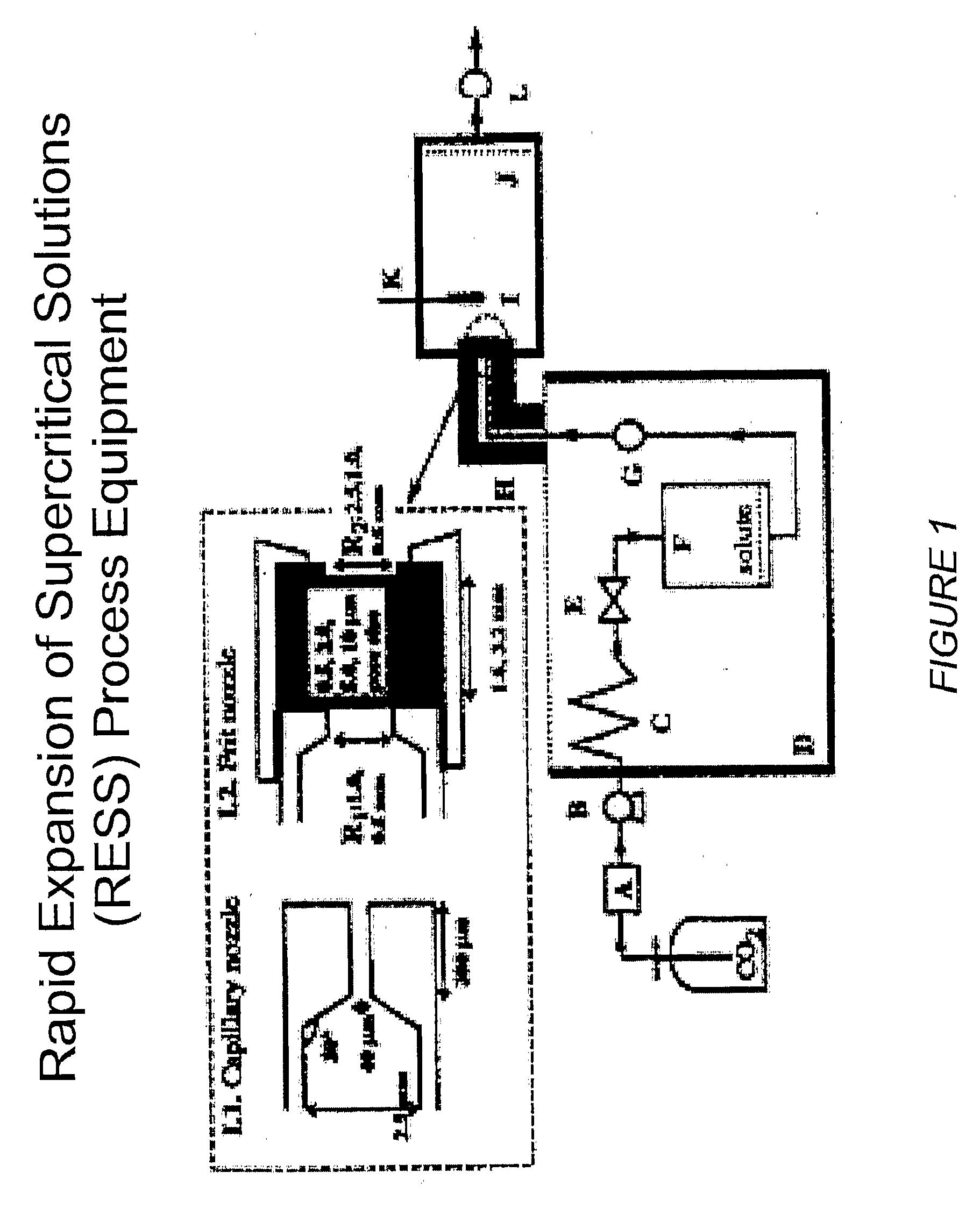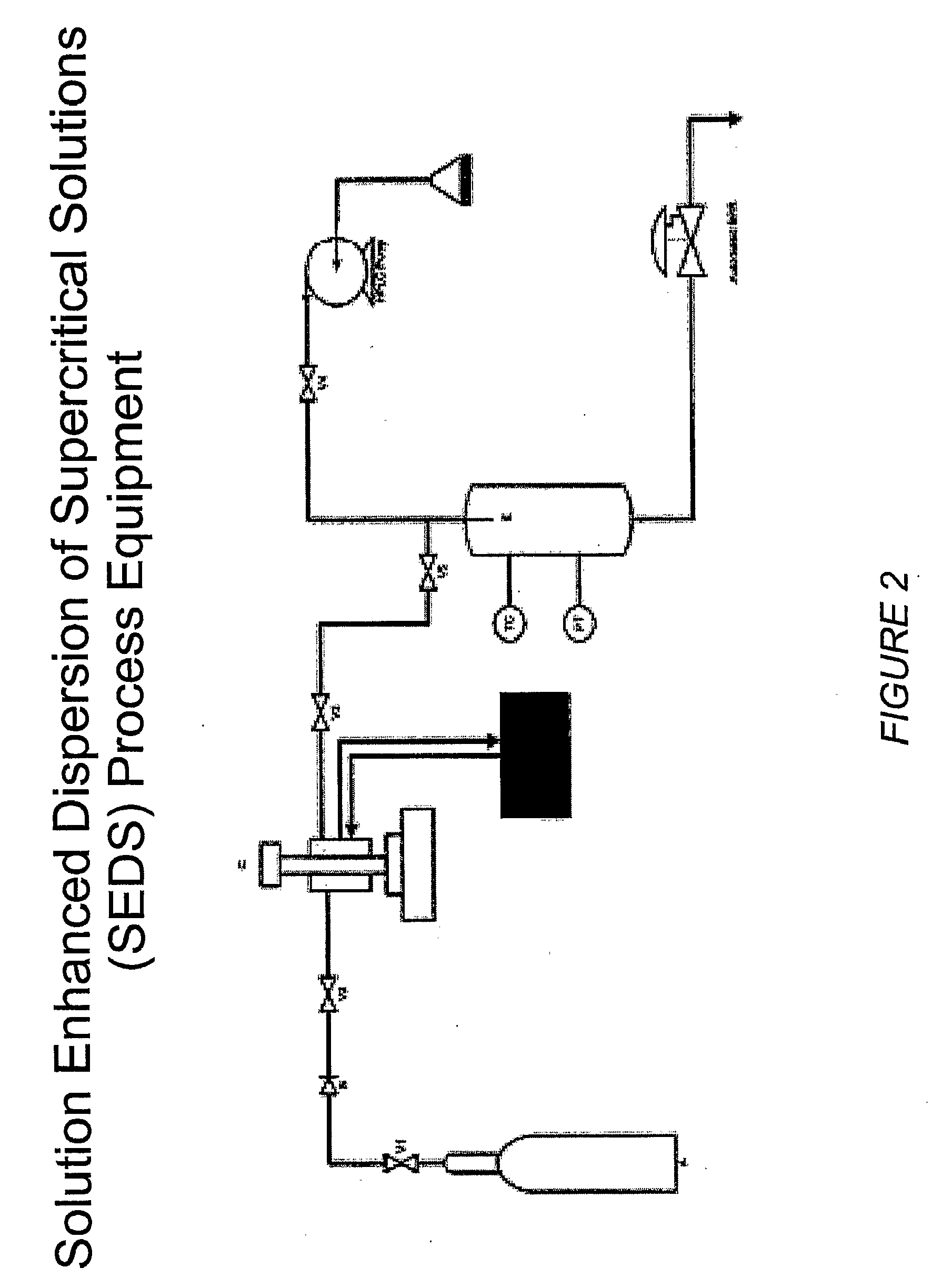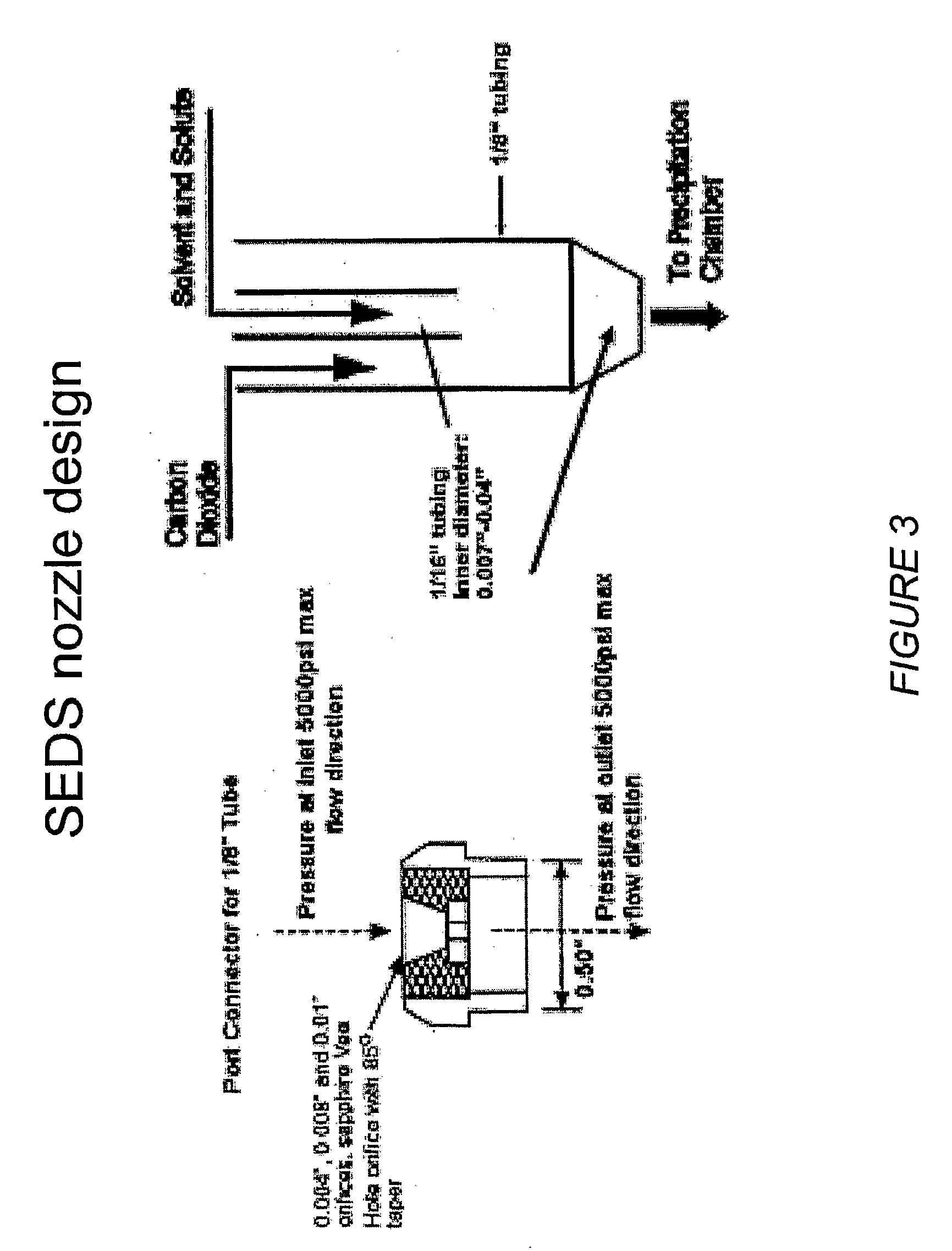Polymer coatings containing drug powder of controlled morphology
a technology of controlled morphology and polymer coating, which is applied in the direction of prosthesis, immunological disorders, metabolism disorders, etc., can solve the problems of poor bioavailability, pharmaceutical or biological agents, and difficulty in achieving uniform coatings
- Summary
- Abstract
- Description
- Claims
- Application Information
AI Technical Summary
Problems solved by technology
Method used
Image
Examples
example 1
[0209]The RESS process equipment used in the present studies is depicted in FIG. 1. This is a common design for a RESS apparatus see C. Domingo et al, Journal of Supercritical Fluids 10, 39-55 (1997). The SEDS equipment used in the present studies is depicted in FIGS. 2 and 10. FIG. 2 shows a common SEDS apparatus and FIG. 10 shows a SEDS apparatus using a two-nozzle design with electrostatic capture of the sprayed particles. The nozzle orifice size can be used to control the particle size. FIG. 3 depicts the nozzle design for the SEDS equipment shown in FIGS. 2 and 10. FIG. 4 shows the FTIR spectra of a representative small molecule medically therapeutic agent, two polymers and the mixture of the components. IR stretches specific to each molecule are identified and labeled. FIG. 5 shows implantable medical devices coated with pharmaceutical agent and polymer under various sintering conditions. FIG. 6 shows the infrared spectra of the 3-component coating before and ...
example 2
General Spray Coating 1
[0210]A solution containing a therapeutic chemical compound that is saturated in a solvent or supersaturated in a solvent is sprayed at a flow rate sufficient to achieve flow into a chamber of known volume pressurized above ambient pressure and containing a medical device substrate. The system temperature is held constant or allowed to vary so that any number of points in the phase diagrams of the solution or mixture or any of its individual components can be mapped in pressure-temperature, volume-pressure or pressure-volume space constituting liquid, gas or supercritical CO2 conditions. CO2 in any single phase or combination of phases flows through the chamber at a mass flow rate of 5 gm / min to some multiple of this flow rate. After a period of time ranging from seconds to minutes or hours have elapsed, the solute and solvent flow that is a solution of the therapeutic compound and suitable solvent for the chosen solute or solutes cease but CO2 flow continues ...
example 3
[0211]A solution of equal parts of one solvent and another miscible solvent containing therapeutic chemical compound is prepared so that compound is not saturated. This solution is sprayed at a known flow rate ranging from 1 mL / min to 100 mL / min into a chamber of known volume and pressurized above ambient pressure. The system temperature is maintained at a constant level or allowed to vary so that any number of points in the phase diagrams of the solution or mixture or any of its individual components can be mapped in pressure-temperature, volume-pressure or pressure-volume space. CO2 flows through the chamber at a known flow rate. Spraying is stopped after a period of time, but CO2 flow continues for an additional period of time sufficient to ensure that the chamber volume has been turned over or replaced a sufficient number of times to remove any residual solvent or co-solvent from the chamber after which the pressure is reduced to atmospheric pressure. As in the ab...
PUM
| Property | Measurement | Unit |
|---|---|---|
| thickness | aaaaa | aaaaa |
| particle size | aaaaa | aaaaa |
| flow rate | aaaaa | aaaaa |
Abstract
Description
Claims
Application Information
 Login to View More
Login to View More - R&D
- Intellectual Property
- Life Sciences
- Materials
- Tech Scout
- Unparalleled Data Quality
- Higher Quality Content
- 60% Fewer Hallucinations
Browse by: Latest US Patents, China's latest patents, Technical Efficacy Thesaurus, Application Domain, Technology Topic, Popular Technical Reports.
© 2025 PatSnap. All rights reserved.Legal|Privacy policy|Modern Slavery Act Transparency Statement|Sitemap|About US| Contact US: help@patsnap.com



